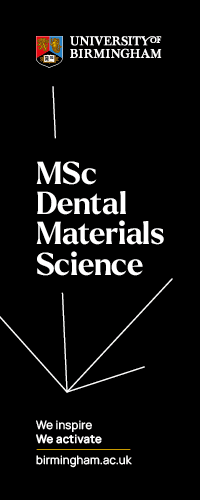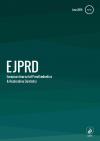European Journal of Prosthodontics and Restorative Dentistry
Comparison of Marginal and Internal Defects of Indirect Inlay Patterns Fabricated Using Additive Manufacturing and Traditional Methods – An Ex Vivo Study
Abstract
Introduction: This study aimed at exploring clinical translation of additive manufacturing methods for fabrication of inlay restorations. Materials and methods: On a selected human premolar tooth sample an inlay cavity was prepared. A silicon impression of the tooth was recorded and ten die-casts were poured. Ten inlay wax patterns were fabricated using traditional method. An optical impression of the tooth model was obtained and 20 computeraided inlay designs were fabricated and optimised for additive manufacturing. Ten models were fabricated by micro-stereolithography and the other ten were fabricated using selective laser sintering. 30 inlay patterns were cast into cobalt chromium metal inlays. For 30 metal inlays, marginal and internal gaps were measured using a silicone-replica-technique, observed under a scanning electron microscope. Results: The measured internal gaps
were: Internal-gaps in Conventional lost wax technique (138 ± 8.7), micro-stereolithography (200 ± 7.4) and selective laser sintering (203 ± 11.8). The marginal gaps were: Conventional lost wax technique (162.12 ± 6.8), micro-stereolithography (198 ± 10.3) and scanning laser sintering (203 ± 6.6) Conclusions: The marginal gap and internal gap of a conventional lost wax technique were significantly improved compared with microstereolithography
and selective laser sintering (P<0.05). However, according to previous criteria for maximum allowable discrepancy (100 – 200 µm) microstereolithography may represent a potential future alternative for indirect inlay fabrication.
Keywords
Selective Laser Sintering
Computer Aided Design
Additive Manufacturing
Micro Stereolithography
Authors
Dr. Shanmukh Srinivas Peddi, Dr. Vivek Taduri, Dr. Ashwini Shivakumar
Articles from this issue
| Title / DOI | Access | Page Start | Page End | Purchase |
|---|---|---|---|---|
| Clinical Factors Influence the Trueness of Intra-oral Scanning 10.1922/EJPRD_01861Jivanescu05 |
|
51 | 55 |
£10.00 |
| Accuracy of inlay and onlay restorations based on 3D printing or milling technique - a pilot study 10.1922/EJPRD_01814Ahlholm09 |
|
56 | 64 |
£10.00 |
| Comparison of Marginal and Internal Defects of Indirect Inlay Patterns Fabricated Using Additive Manufacturing and Traditional Methods – An Ex Vivo Study 10.1922/EJPRD_01877Peddi10 |
|
66 | 75 |
£10.00 |
| Influence of Ceramic Materials on Biomechanical Behavior of Implant Supported Fixed Prosthesis with Hybrid Abutment 10.1922/EJPRD_01829Tribst07 |
|
76 | 82 |
£10.00 |
| Early Effect of Implant Supported Rehabilitation and Nocturnal Bruxism on Maximum Occlusal Force: A Cross-Sectional Study 10.1922/EJPRD_01910Villarinho06 |
|
84 | 89 |
£10.00 |
| Clinical Survival of Indirect, Anterior Surface-Retained Fiber-Reinforced Composite Fixed Dental Prosthesis: Up to 3-Year Follow-up 10.1922/EJPRD_01651Aktas05 |
|
90 | 94 |
£10.00 |
 Free Access
Free Access No Access
No Access Full Access
Full Access


